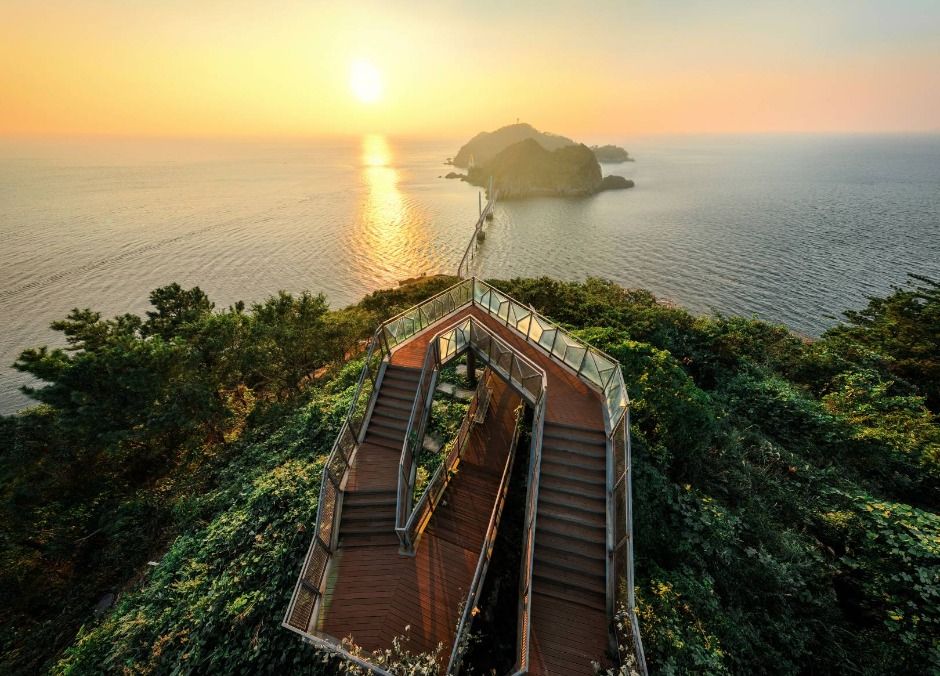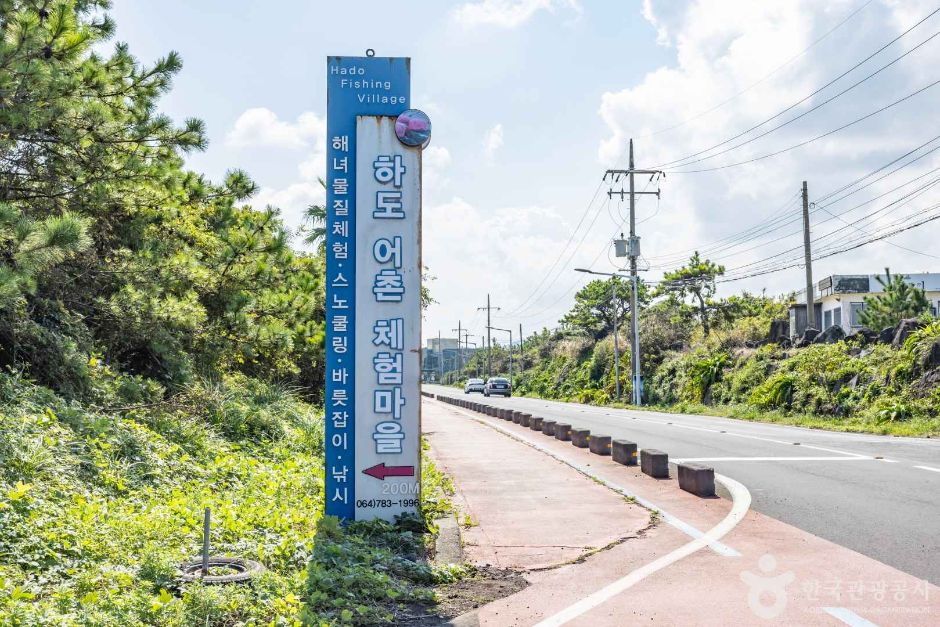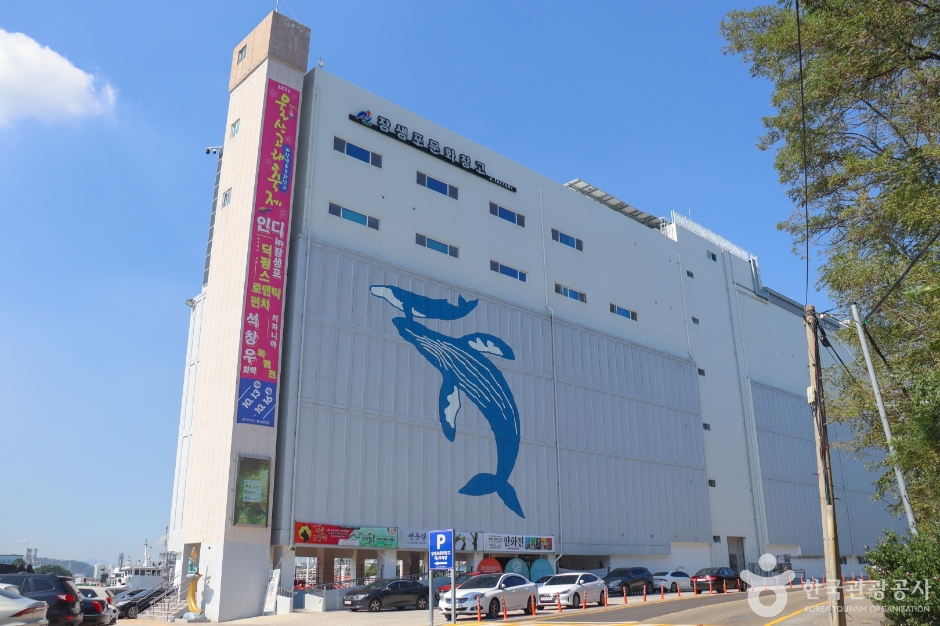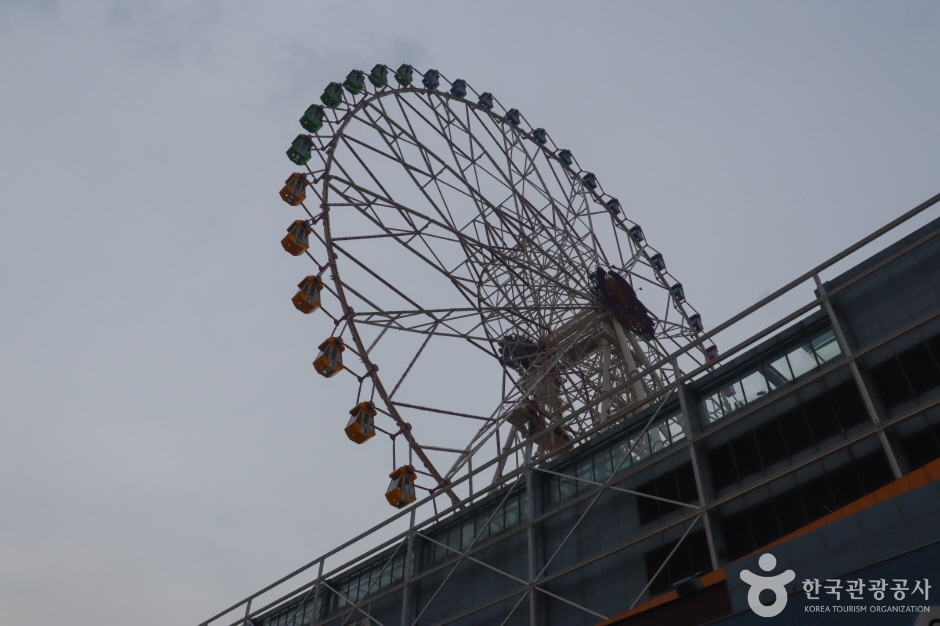Explanation
SEOUL SKY is located on floors 117-123 of Lotte World Tower, the nation's tallest and the world's fifth tallest building. The observatory offers a panoramic view of the entire capital city, beautiful both day and night. SEOUL SKY is comprised of an exhibition zone, observation deck, sky deck, dessert cafe, sky terrace, lounge, and more.
To get to Seoul Sky, visitors have to take the Sky Shuttle, a double-deck elevator that reaches a speed of 600 meters per minute. The one-minute ride feels quite short while watching the videos playing on the walls and ceiling. While waiting for the elevator up, visitors can enjoy art in the exhibition zone in basement levels 1-2. The exhibition includes artwork displaying the history, culture, and pride of Korea's foundation and success over the centuries. Visitors can also purchase Seoul Sky merchandise from the gift shop to remember their trip or give as a souvenir.
The observation deck has two story-high glass windows for an uninterrupted view. The Sky Deck, located at 478 meters, holds the Guinness World Record as the highest glass-floored observatory in the world. On days when visibility is limited, visitors can still enjoy a clear sky through the Sky Theater. The 120 floor holds the Sky Terrace, open to the elements.
Visitors looking for refreshments can enjoy the one-of-a-kind menu served at the dessert cafe Sky Friends Cafe on level 119, or refreshing wine sold at the premium lounge on floor 123. This cozy space is the highest lounge in Seoul and is perfect for taking in the view in a relaxing ambiance.
Inquiry
+82-1661-2000
Homepage
Information Use
Years experience : Open to visitors of all ages
Contact and Information : +82-1661-2000
Parking facilities : Available
Day off : N/A (Open all year round)
Hours : Sunday-Thursday 10:30-22:00
Friday-Saturday & public holidays 10:30-23:00
* Last ticketing one hour before closing
More information
Admission Fees
[SEOUL SKY]
General ticket: Adults 31,000 won / Children 27,000 won
* Adults (ages 13 & older) / Children (ages 3-12)
* Tickets can be purchased online, over the phone, and on-site.
Fast Pass: 62,000 won for all visitors
* Tickets only available on-site the day of visit.
* Ticket allows for immediate admission without a prior reservation
* One infant (under 36 months) allowed free admission with an adult (Proper ID required)
Available Facilities
Exhibition zone, sky deck, sky terrace, sky shuttle, media table, photo zone, gift shop, cafe & lounge, information desk, nursery, etc.
Parking Fees
Free parking for up to 4 hours for Seoul Sky ticket-holders
* Standard parking fees apply after 4 hours (500 won for 10 min 10:00-20:00 / 200 won for 10 min outside that time)
Location
300 Olympic-ro, Songpa-gu, Seoul





 English
English
 한국어
한국어 日本語
日本語 中文(简体)
中文(简体) Deutsch
Deutsch Français
Français Español
Español Русский
Русский